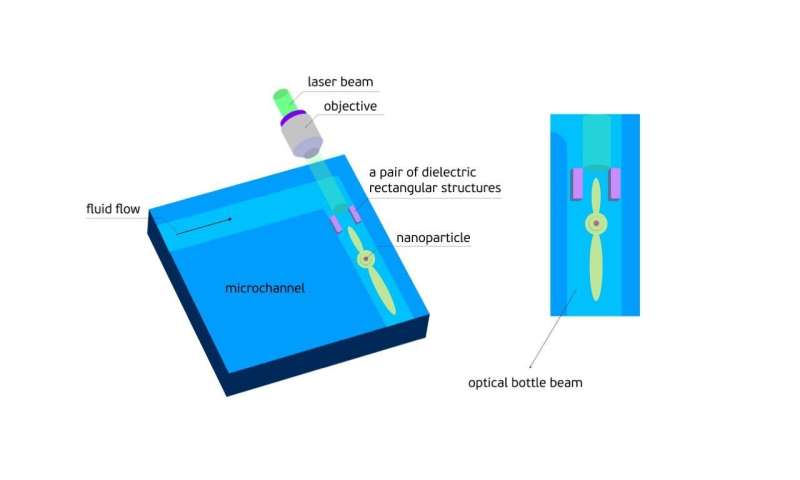TPU Scientists Develop Conceptually New Chip of Lensless Optical Traps for Lab-on-a-Chip

Scientists of Tomsk Polytechnic University jointly with their colleagues from National Chiao Tung University (Taiwan) have proposed a concept of a new optical bottle-beam trap. The scientists showed that two dielectric micro-bricks could be applied instead of the lens. Unlike its alternatives, in the long run, such a trap can be used in lab-on-a-chips (LOC). The LOC is a tiny device that allows conducting various research, including biochemical one using a few square millimeter chip. It will significantly broaden the opportunities of tiny laboratories. The research findings are published in the Optics Letter academic journal (IF: 3,866; Q1).
The optical trap is also called an optical capsule. It is a device using a laser beam that captures micro-sized objects not disrupting their inner structure. For instance, they can be living cells, proteins and molecules. A functioning principle of the known optical capsules is usually based on the application of complexly structured beams.
The scientists proposed a lensless method to form the optical micro-capsule. In this case, a closed domain of the field localization is created using two dielectric bricks. The sizes of these bricks are compared with the length of a lightwave. If two dielectric bricks are illuminated using plane front light from the end dace, the localization field of the light field is formed in output. Under the right dimensioning of the bricks, the closed domain, a special ellipse is formed. There is high intensity of the electric field along the edges of the ellipse, while there is zero intensity inside of the domain. Nanoparticles are not able to pop out this edge. This is the optical capsule.
The process simulation and calculations were carried out based on the solution of Maxwell's equations. Gold nanoparticles were used as samples for the calculations. Gold is a classical substance to solve such tasks. Gold nanoparticles are absorbing particles for the chosen wavelength.
"The concept developed by us allows obtaining a prolate optical trap. It is a definite advantage as such a capsule can capture not only spherical nanoparticles but also prolate ones. In particular, the prolate nanoparticles are viruses. It considerably broadens the range of application of the capsule,"
"The concept developed by us allows obtaining a prolate optical trap. It is a definite advantage as such a capsule can capture not only spherical nanoparticles but also prolate ones. In particular, the prolate nanoparticles are viruses. It considerably broadens the range of application of the capsule," says Oleg Minin, Professor of the TPU School of Non-Destructive Testing and Head of the project.
In the next, experimental stage of the research, the scientists will test the concept practically. The lensless optical traps can be applied in medicine, biology, as well as in the synthesis of new materials.
More information:
Alina Borovskaia, avb39@tpu.ru
Provided by Tomsk Polytechnic University